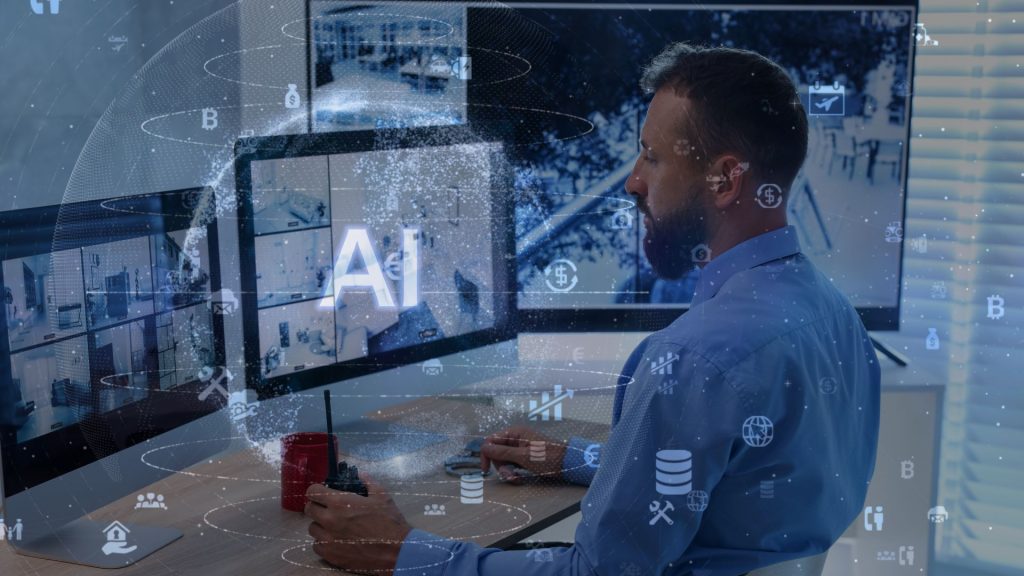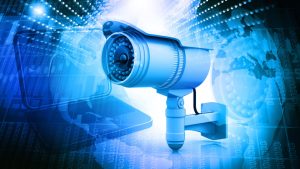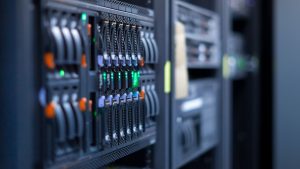When considering AI search for security cameras, it’s essential to ensure you’re investing in genuine Artificial Intelligence—a system that thinks, learns, and adapts over time—rather than a sophisticated search tool masked by buzzwords. For Gulf Coast condos, which face unique challenges like storm damage, seasonal tourist traffic spikes, and theft from beachgoers or transients, getting this right is critical. These environments require systems that can distinguish between a wind-blown branch and a real intruder or quickly identify theft in crowded parking areas during peak season.
Mark Jones of YellowHammer IT, LLC, an approved instructor for CCTV and Access Control certifications and CEU courses in Alabama and Tennessee, with over a decade of hands-on experience installing security and network systems in coastal businesses and communities, shares 10 practical questions to ask. These will help ensure your investment delivers real security, operational efficiency, and legal value.

10 Questions About AI Search & CCTV

How does the system prove it's real AI and not just a good search tool?
The system should use machine learning algorithms to establish a baseline of normal activity tailored to your condo (e.g., standard foot traffic patterns around the pool during tourist season, typical vehicle movements in parking lots, or resident behaviors in common areas). It should automatically flag deviations from this baseline as anomalies, improving accuracy over time through self-learning.
You should be able to search for abstract, context-aware behaviors (like ‘loitering near the bike rack after dusk’ or ‘a vehicle parked for more than 30 minutes in a no-parking zone’), not just rigid, pre-defined objects (like ‘red car’ or ‘person in blue shirt’).
Look for systems that integrate video analytics with natural language querying, allowing HOA managers to input plain-English searches that pull relevant footage instantly from indexed databases. Advanced features might include predictive analytics that anticipate issues based on historical data, such as increased loitering during storm evacuations.

Imagine a resident reports their orange backpack missing from the beachfront storage area early one morning. As the HOA manager, you log into the AI-powered security system and query: “Show all footage of an individual with an orange backpack moving from the beach to the building and parking lot between 6:00 AM and 7:00 AM.”
The AI instantly processes video from multiple cameras, using object recognition and behavioral tracking to compile a timeline. It pulls up a sequence of clips:
- At 6:01 AM, Camera 1 (Beach View) captures the suspect approaching the storage rack, grabbing the backpack, and heading inland—showing a side profile as it crawls across the sand.
- By 6:15 AM, Camera 2 (Building Entrance) tracks the figure navigating the stairs, with a clear front view highlighting the orange backpack strapped on securely as it ascends step by step.
- Finally, at 6:30 AM, Camera 3 (Parking Lot) shows the culprit from behind, weaving between cars with the backpack still attached, before disappearing toward the dunes.
You export the timestamped montage with forensically sound metadata, ready to share with authorities. But upon closer inspection… the “thief” isn’t a sneaky tourist—it’s a determined sea turtle that mistook the backpack for a cozy shell accessory!
Thanks to the AI’s precise search and low false-positive rate (even distinguishing wildlife from human threats), you resolve the “crime” with a laugh, relocate the turtle safely, and return the backpack unharmed. This highlights how AI not only accelerates investigations but also adds a humorous twist to coastal living.
Why This Matters
True AI learns your specific Gulf Coast environment, dramatically reducing false alarms, which can plague traditional systems in windy or rainy conditions, saving your HOA time and money on unnecessary responses. If it’s only searching based on basic color, shape, or motion triggers without adaptation, it’s just a glorified filter that won’t evolve with your community’s changing needs, like seasonal crowds or post-storm debris.

How fast can your system help us stop a theft in progress?
The system must be capable of rapid theft detection and instant alerts via real-time video analytics. AI surveillance should process streams on the fly to identify suspicious gestures (like concealing an item, atypical handling of communal property such as kayaks or outdoor furniture, or quick movements toward storage areas).
If an incident is detected, the AI sends customizable alerts, instantly via app notifications, email, or integrated sirens allowing response times to drop from hours to mere minutes, potentially before the thief even leaves the property. For example, in retail-like scenarios adapted to condos, systems like those using AI-powered analytics can detect shoplifting-equivalent behaviors (e.g., pocketing pool equipment) with over 95% accuracy, triggering proactive interventions. Integration with mobile apps ensures HOA board members or security can view live feeds and confirm threats remotely.
Why This Matters
For Gulf Coast properties, where opportunistic crime spikes during tourist season with theft rates increasing in high-traffic areas like beaches and marinas, a fast response is the difference between deterring a crime and dealing with insurance claims for lost bikes, boats, or public patio items. This proactive edge turns passive cameras into a real-time shield, minimizing losses that could otherwise strain your HOA’s budget.

Can the AI track an individual across multiple cameras, and what evidence is generated?
This is a crucial question. Through advanced object tracking and re-identification algorithms that maintain continuity even if the person changes posture or lighting varies. If a resident reports an individual (e.g., a person in an orange shirt and a dark baseball cap acting suspiciously), the system should compile a complete, timestamped path across all exterior cameras, for instance, tracking them from the bike rack (Wednesday, 2:27:15 PM UTC) to the main walkway (Wednesday, 2:31:02 PM UTC), and then to the exit gate (Wednesday, 2:40:10 PM UTC), complete with license plate capture if a vehicle is involved. The output should be an automated report or video montage exportable in formats like MP4, with embedded metadata for easy sharing with authorities.
Why This Matters
In sprawling condo complexes, this provides immediate, comprehensive evidence rather than fragmented clips that require hours of manual piecing together. It gives law enforcement a detailed lead, increasing the resolution rate for incidents like vandalism or theft.

How do you guarantee the video evidence is legally admissible in court?
Find out if the system features forensically sound timestamps synchronized with global UTC time servers, ensuring every frame is stamped with precise, non-tamperable details (Year/Month/Day, Hour:Minute:Second:Millisecond) to prevent challenges over authenticity. It should preserve all metadata (e.g., camera location, settings) during export and maintain an unbroken chain of custody through encrypted, audited logs that track who accesses footage and when. Compliance with standards like those from the Scientific Working Group on Digital Evidence (SWGDE) ensures integrity, and features like digital watermarks or blockchain verification add extra layers against tampering.
Why This Matters
Without these legal safeguards, your video evidence could be dismissed in court due to doubts about tampering or inaccuracies. Admissible evidence protects your community legally and financially.

How do you guarantee the video evidence is legally admissible in court?
The vendor must specify weather-resistant hardware rated at least IP66 or IP67 for dust, water, and corrosion resistance against salt air, high humidity, and winds. They should provide data on the system’s tested false positive rate for coastal factors like heavy rain (which can trigger motion sensors), high winds rattling foliage, or wildlife such as gulls and crabs. Look for UV-resistant coatings and vandal-proof domes, plus surge protection to withstand power fluctuations during storms. Battery backups or solar options ensure operation during outages during storms.
Why This Matters
Gulf Coast condos endure corrosive salt spray and extreme weather that can degrade standard cameras within months, leading to failures during critical times like evacuations when looting risks rise. A system that constantly flags benign elements like wind-blown palm fronds as intruders erodes trust and wastes resources. This defeats the purpose of AI while potentially increasing maintenance costs by 30-50% in harsh environments.


Can the system help us manage emergencies and storm damage?
Yes, through comprehensive issue resolution via AI-driven queries that go beyond security. When inclement weather approaches, managers should query for operational anomalies like “fallen debris blocking walkways,” “flooding in the garage area,” or “unauthorized access post-curfew during evacuations,” pulling timestamped footage to speed up assessments. Integration with environmental sensors could flag rising water levels or structural damage, automating reports for insurance claims with before-and-after visuals.
Why This Matters
Gulf Coast storms can cause widespread damage, with power outages disabling traditional systems and increasing vulnerability to looting. This turns your AI into a multifaceted tool for recovery, streamlining insurance processes (potentially reducing claim times by days) and enhancing resident safety during crises, rather than just recording aftermath.

What are the system's privacy safeguards for residents?
The system must prioritize behavioral analysis (e.g., detecting loitering without identifying faces) over invasive facial recognition to minimize privacy risks, complying with laws like data privacy statutes. Implement limits on data retention (e.g., auto-deleting footage after 10-20 days unless flagged), anonymized processing, and transparency measures like posted signs, resident notifications, and privacy impact assessments. Edge-based processing keeps data local, reducing cloud exposure.
Why This Matters
Balancing security with privacy builds resident trust and avoids legal pitfalls, such as lawsuits over unauthorized surveillance. Strong safeguards ensure the system protects the community without infringing on individual rights, fostering a sense of safety rather than intrusion.

Can the AI turn surveillance into action using access control?
Yes, with programmable alert logic that triggers physical responses automatically, such as locking gates upon detecting unauthorized entry, activating floodlights in suspicious zones, or integrating with alarms for tailored alerts (e.g., silent for minor issues, loud for threats). This could extend to smart integrations like notifying emergency services or adjusting HVAC during detected floods.
Why This Matters
Passive recording alone misses opportunities for prevention; active integration transforms your system into a responsive fortress of safety by reducing incidents in high-risk areas like entry points. For HOAs, this means fewer claims and safer residents without constant human oversight.
For more info, check out the State of Alabama (AESBL) approved Access Control Certification.

Will the video analysis be slow and hog our internet bandwidth?
Ask if the system uses Edge Computing, meaning the AI analysis happens directly on the camera or local device, delivering results with minimal delay (under 1 second). This drastically reduces the amount of data sent to the cloud, slashing bandwidth needs and ensuring the cameras still function and analyze video during internet outages common in storms. This enhances privacy by keeping raw footage local and ensures functionality during internet outages common in storms. Vendors should provide bandwidth estimates, like under 1Mbps per camera for alerts.
Why This Matters
Cloud-only systems can lag in real-time detection and rack up high data costs, especially in remote areas with spotty connectivity, while edge processing lowers bills, boosts speed, and maintains operations when uploads fail.

What do we get in terms of training and long-term support?
The vendor must outline a comprehensive user training program for your HOA staff, including hands-on demos for search queries, alert setups, and evidence exports via mobile apps. They should guarantee Service Level Agreements (SLAs) with defined response times for critical failures (e.g., a 4-hour onsite response if recording stops) and detail the update procedures for new AI features, backed by performance metrics like uptime guarantees (e.g., 99.9%).
Why This Matters
A powerful tool is worthless if staff can’t use it quickly when needed. Reliable, guaranteed support prevents downtime during peak threats like storm season, ensuring your investment pays off for years to come.

Final Thoughts
Choosing the right AI-powered security system isn’t just about cameras—it’s about protecting your Gulf Coast condo community with intelligence that adapts, responds, and endures. By asking these 10 targeted questions, you ensure your provider delivers true AI that learns your property’s rhythm, slashes false alarms in wind and rain, stops theft before it escalates, and produces ironclad, court-ready evidence.
You’ll gain more than surveillance—you’ll have a proactive partner that manages emergencies, survives storms, respects privacy, and integrates with access control to prevent incidents, not just record them.
For HOA boards and managers along the Gulf, this isn’t an upgrade. It’s a necessity. Don’t settle for buzzwords. Demand proof. Your residents, your budget, and your peace of mind depend on it.
Contact a certified security specialist and instructor like Mark Jones at YellowHammer IT, LLC to evaluate your current system and explore real AI solutions built for coastal resilience.
More Articles

How to Choose the Right Software for Your Business

Video Surveillance Use Cases on the Gulf Coast

Workforce Development via Online Learning: Our Innovative Approach

How Business Owners Can Overcome IT Challenges & Cut Costs

Tailored IT Services for Southern Businesses

Website Development & Hosting: DIY vs. MSP

Top 10 Strategies for Ad Panels: Maximizing Impact

Strategies for Remote and Hybrid Work Success


